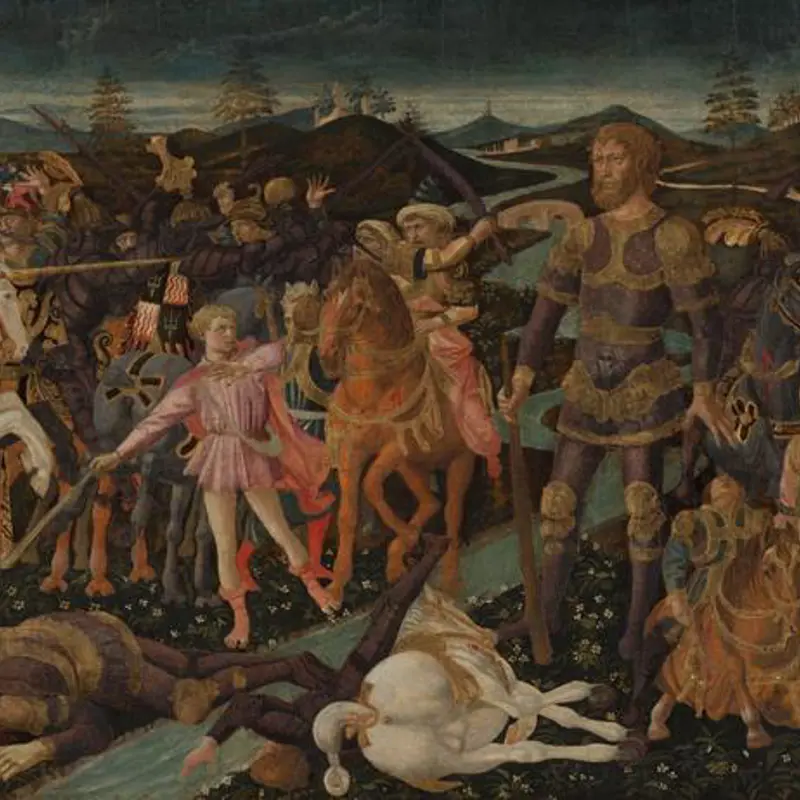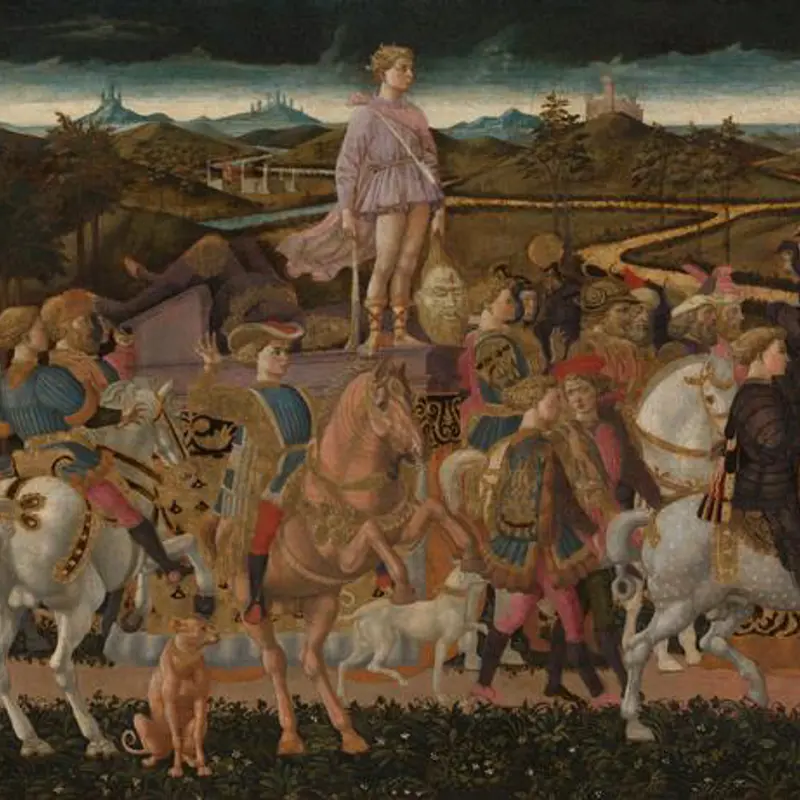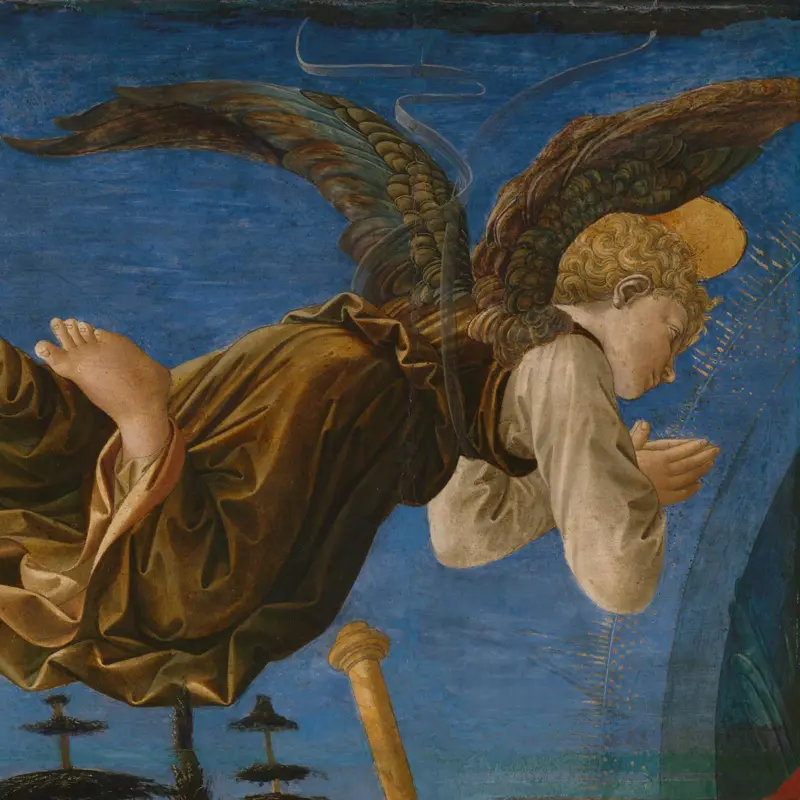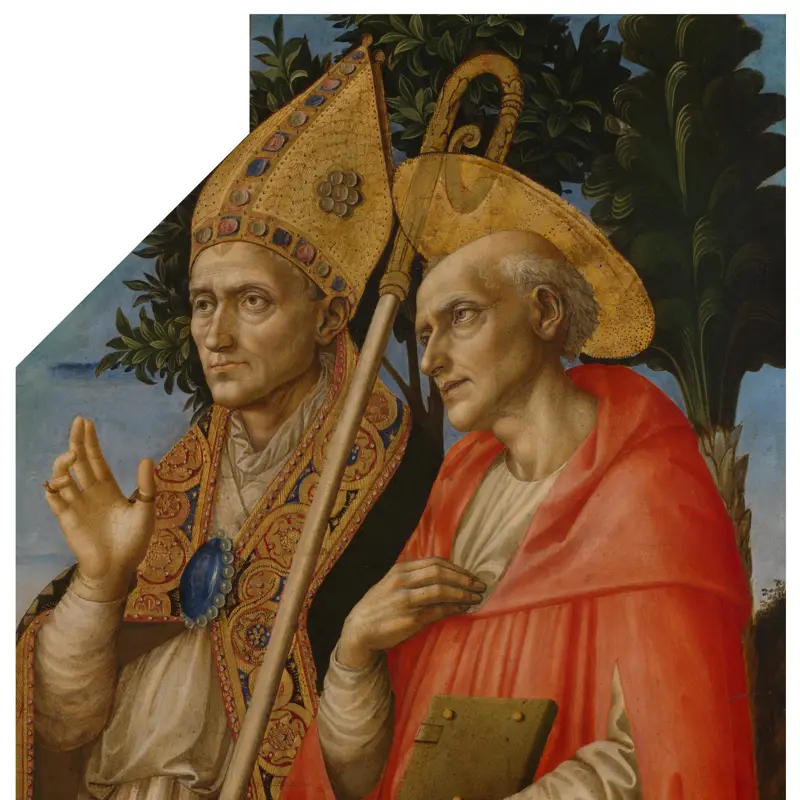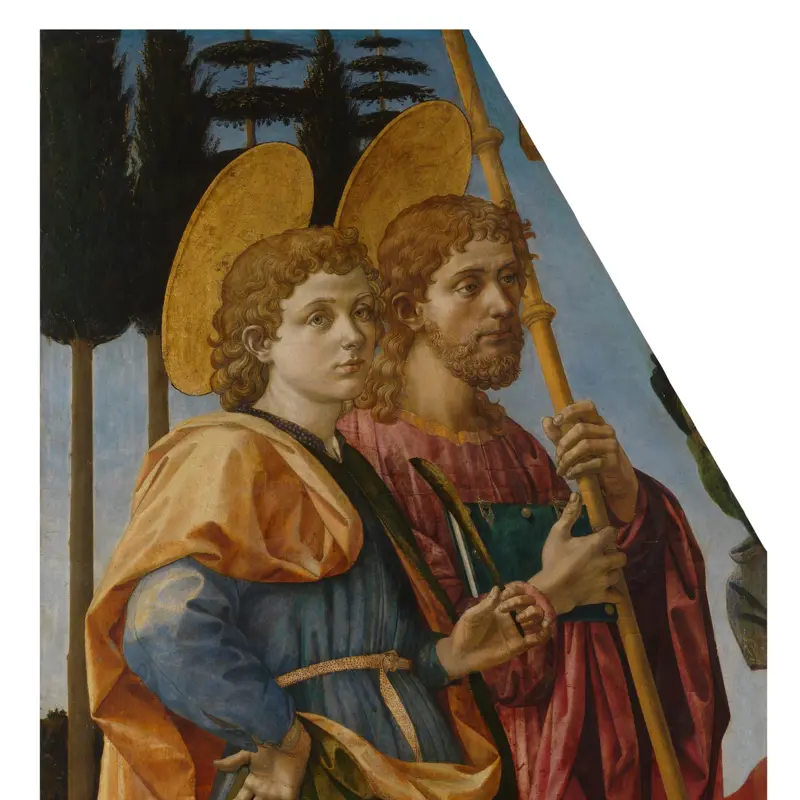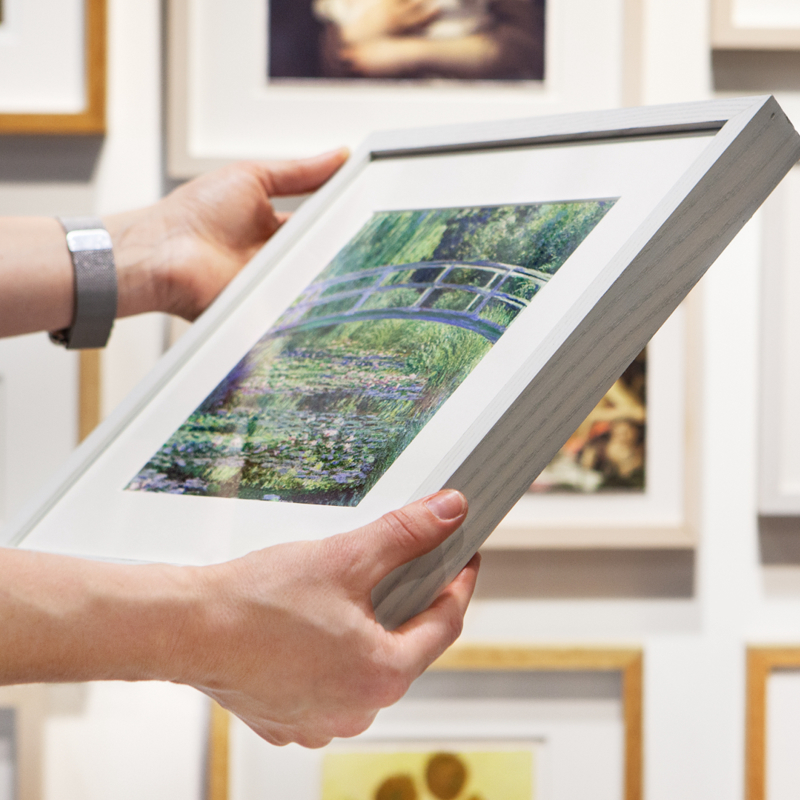Francesco Pesellino, 'The Story of David and Goliath', about 1445-55
About the work
Overview
This long and fantastically detailed painting is a precious survivor of Renaissance interior decoration – and it gives us an idea of just how spectacular this could be. It is one of a pair telling the story of David, King of Israel, who started life as a shepherd boy but rose to fame and fortune through killing the giant Goliath.
In the centre we see David, in pink, swinging his sling, taking aim at the armoured Goliath, whose forehead is already bleeding. In the foreground David beheads the fallen giant. The complex composition is linked by the stream: it flows from left to right, in and out of the panel, joining the most important incidents.
The painting, together with its pair also in the National Gallery’s collection, were doubtless made to commemorate a marriage, possibly of a member of the Medici, the ruling family of fifteenth-century Florence.
Key facts
Details
- Full title
- The Story of David and Goliath
- Artist
- Francesco Pesellino
- Artist dates
- 1422 - 1457
- Part of the series
- Story of David Panels from a Pair of Cassoni (?)
- Date made
- About 1445-55
- Medium and support
- Egg tempera on wood (probably poplar)
- Dimensions
- 45.5 × 179.2 cm
- Acquisition credit
- Bought with the assistance of the Art Fund and a number of gifts in wills, 2000
- Inventory number
- NG6579
- Location
- Room 62
- Collection
- Main Collection
- Frame
- 20th-century Replica Frame
Provenance
Additional information
Text extracted from the ‘Provenance’ section of the catalogue entry in Dillian Gordon, ‘National Gallery Catalogues: The Fifteenth Century Italian Paintings’, vol. 1, London 2003; for further information, see the full catalogue entry.
Exhibition history
-
2023Pesellino: A Renaissance Master RevealedThe National Gallery (London)7 December 2023 - 10 March 2024
Bibliography
-
2000National Gallery, The National Gallery Review: April 1999 - March 2000, London 2000
-
2001
C. Baker and T. Henry, The National Gallery: Complete Illustrated Catalogue, London 2001
-
2003Gordon, Dillian, National Gallery Catalogues: The Fifteenth Century Italian Paintings, 1, London 2003
Frame
This replica frame was probably made at the Gallery in the 20th century. A pinewood frame with water gilding, it features a fillet and an ogee moulding.
Pesellino’s The Story of David and Goliath may have once been set into the panelling of a bedchamber or incorporated into a cassone.
About this record
If you know more about this work or have spotted an error, please contact us. Please note that exhibition histories are listed from 2009 onwards. Bibliographies may not be complete; more comprehensive information is available in the National Gallery Library.
Images
About the series: Story of David Panels from a Pair of Cassoni (?)
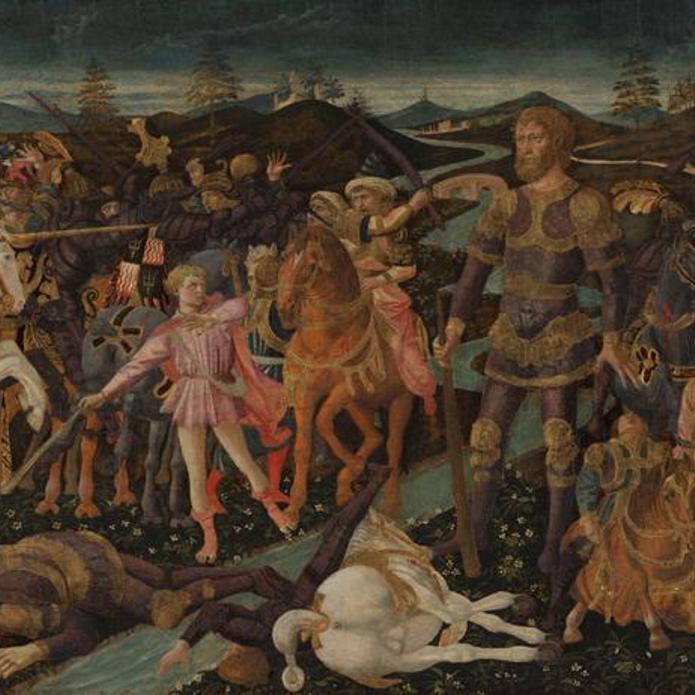
Overview
There’s so much going on in these pictures that it’s hard to make out the story. Battles and parades, knights and nobles, horses, hounds, lions, bears and giants are crammed in a flowery Tuscan landscape. Although it looks like a fairy tale set in medieval Italy, the story comes from the Bible and tells how a brave shepherd boy, David, married a princess after defeating a giant, Goliath.
The long shape of each painting is due to their original function. They would probably have been set into the panelling of a private room, possibly over a chest. We don't know exactly who they were made for, but emblems associated with the Medici, the ruling family of Florence in the fifteenth century, are shown on some of the clothing. They might have been made for a Medici marriage.

